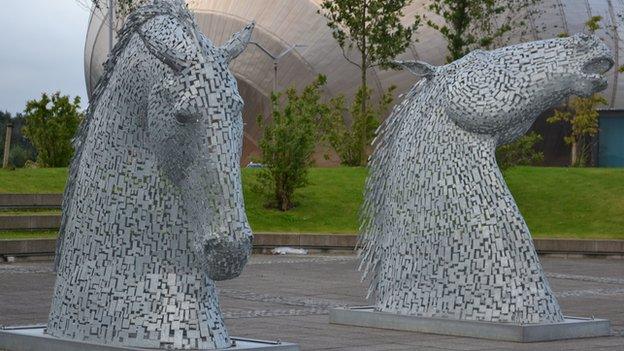Will Belper's Mr Potato Head go the way of Birmingham's King Kong?
- Published

Many pieces of public art provoke a love it loathe it response
From a giant Mr Potato Head to a fibreglass King Kong, public art in English towns has taken many unusual forms over the years. But what do you do when it fails to impress?
Despite the considerable cost and effort often involved, public art can sometimes split opinion.
Indeed, as the Derbyshire town of Belper is currently finding, such sculptures can attract controversy, ridicule and even vandalism.
But have any other towns managed to solve the puzzle?

Mr Potato Head, Belper
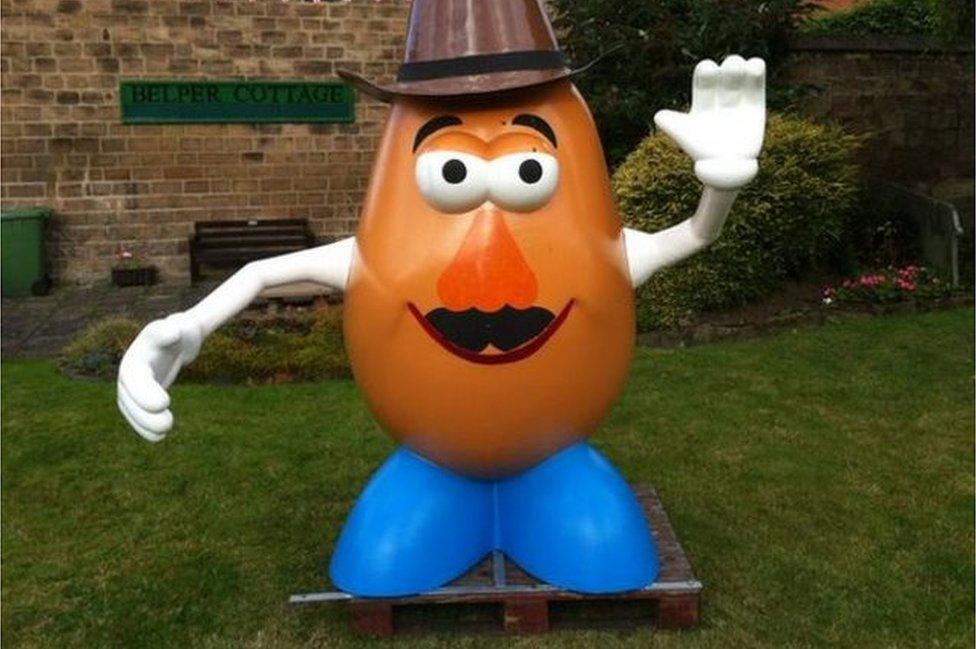
Belper received its Mr Potato Head in 2001 from Pawtucket
Belper has a spud-related situation on its hands - what to do with its Mr Potato Head.
"People either love him or hate him," said council leader John Nelson, who accepted the 7ft-high figure as a gift from US twin town, Pawtucket, in 2001.
"But everybody knows about him."
Mr Potato Head currently stands on a pallet in a community centre's garden, having been lovingly restored by volunteers after years of vandalism.
But he has been attacked again, leaving his arm broken off and hat damaged - prompting concerns over his future.
Councillor Nelson admits the tuber's time in the town may be limited.
"The town council will now need to make a decision, it could be time for him to be put away, we can't continue to see him getting vandalised," he said.
"It might be time for him to go and stand in the sky, which would be a real shame."

Karl Marx, Gloucester
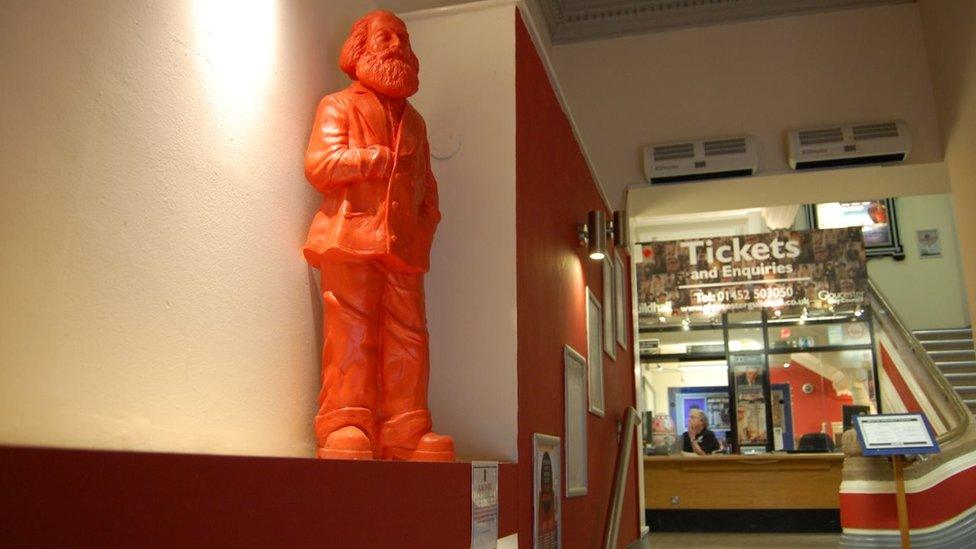
The statue of Karl Marx has found a new home in Gloucester Guildhall
A 4ft-high, bright red Karl Marx caused something of a commotion when he was presented to Gloucester in May 2014.
The statue was a gift from Gloucester's twin town of Trier, in Germany, the birthplace of the communist philosopher.
But Gloucester's Conservative-led city council had an issue with installing such a politically-charged statement in a prominent position in the run-up to an election, so the miniature Marx was confined to a garden.
"It's very difficult," said Liz Goldie of Gloslinks, Gloucester's twinning association.
"You do not want to be undiplomatic and not want what you are given, but sometimes you do wonder what you can do with such a gift.
"Karl Marx is much revered in Trier and obviously he has his place in history but in this country I'm not sure people think too much of him."
After much debate, Karl Marx now resides in Gloucester's Guildhall.

Shoulder to Shoulder, Newcastle
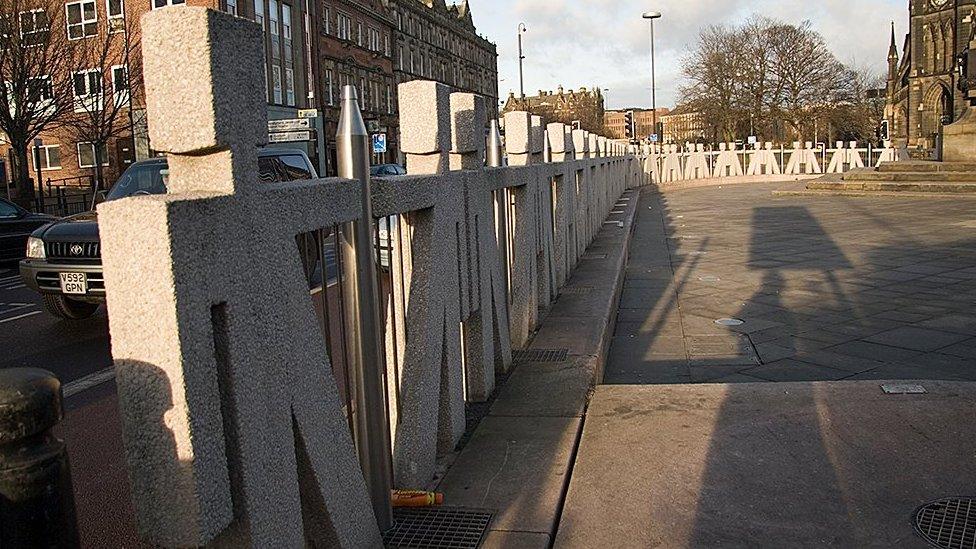
Newcastle's Shoulder to Shoulder installation, known locally as the Lego Men, was in place for nine years
Newcastle has also had to deal with "love it or loathe it" public art.
The Shoulder to Shoulder installation, nicknamed locally as the Lego Men, was installed in 1999 around the Haymarket Metro Station at a cost of £270,000.
All 50 concrete figures were removed in 2008 as part of a refurbishment and have subsequently been sold, with some being auctioned for charity.
Newcastle City Council leader Nick Forbes admitted they sparked mixed opinions.

Brick Man, Leeds
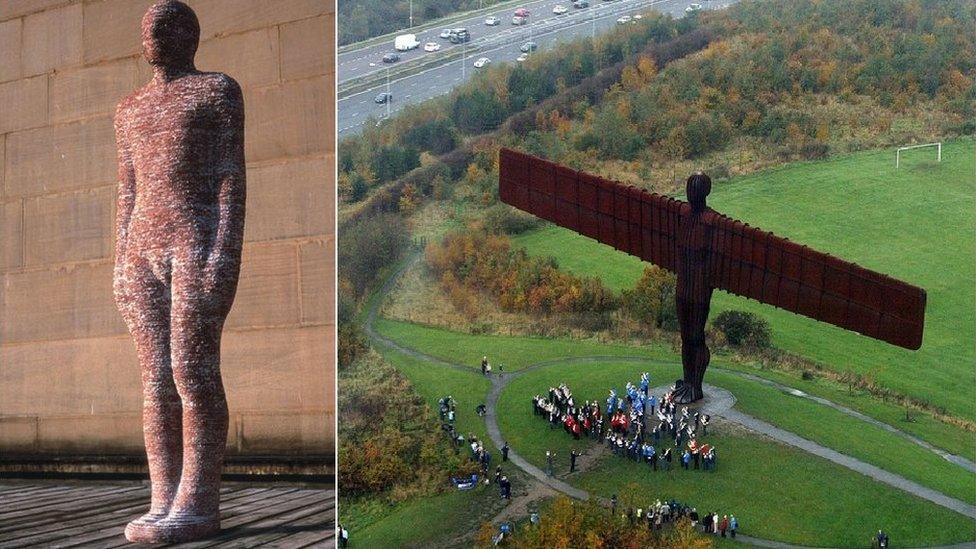
After his plans for a brick man in Leeds were shelved, artist Antony Gormley turned his attention towards creating the Angel of the North in Gateshead
Some schemes cause such a furore they are still debated today, despite never actually leaving the drawing board.
In the 1980s, plans were afoot for a 120ft-high figure of a man made from bricks in the centre of Leeds.
The artist, a certain Antony Gormley, wanted people to be able to enter through the heels, with viewing platforms planned for the ears.
It would have cost £600,000 and been the UK's largest sculpture, but in 1988 Leeds City Council decided against the "extravagance" people could ill-afford.
A poll conducted by the Yorkshire Evening Post found 2,000 people were opposed to it, while 800 were in favour.
George Mudie, then council leader, said the common sense of those against the sculpture "contrasts sharply with the airy-fairy views of celebrities who don't live within 100 miles of the city" who were in favour.
Supporters, however, said it could have become a globally recognisable icon of Leeds, much like Sir Anthony's Angel of the North, built in Gateshead in 1998.

Football figure, Cambridge
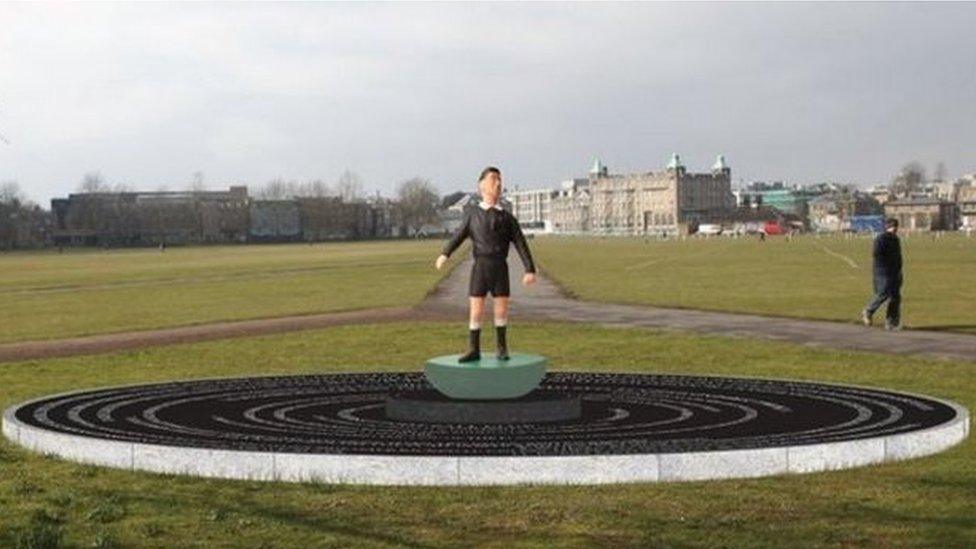
Gordon Cooper designed a Subbuteo-style statue for a Cambridge park but it never got further than the drawing board
Cambridge councillors also wanted something memorable when they enlisted artist Gordon Cooper to create a statue for Parker's Piece, to celebrate the city's claim of being the home of the original football rules.
His Subbuteo-style sculpture was eye-catching but failed to find the back of the net in Cambridge City Council's view.
Initial feedback from the public had been negative and there were concerns the statue's likeness to a Subbuteo figure could cause copyright concerns with the game's owners Hasbro.
The plan had not even reached the public consultation stage when it was shelved.

Michael Jackson, Fulham
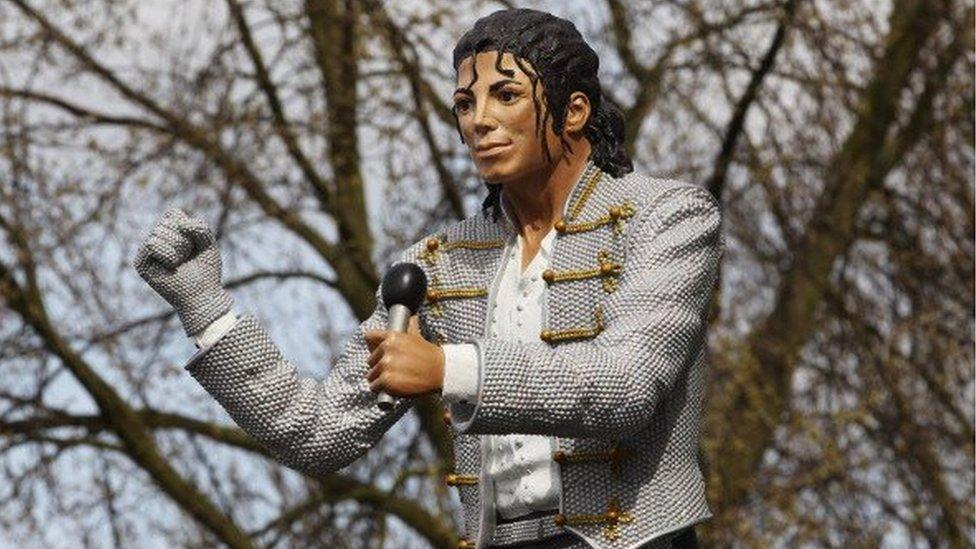
The statue of Michael Jackson was installed outside Fulham's Craven Cottage in 2011
One football statue that did get off the ground, but has since been removed, was the model of Michael Jackson outside Fulham FC's Craven Cottage stadium.
The club's then-owner Mohammed Al Fayed said the singer loved the one match he attended and the statue, installed in 2011, was a fitting tribute to Jackson's "gift to the world".
It was removed in 2014, however, by the club's new owners. Mr Al Fayed said its removal caused Fulham to be relegated from the Premier League.
The statue now resides at the National Football Museum in Manchester.

B of the Bang, Manchester
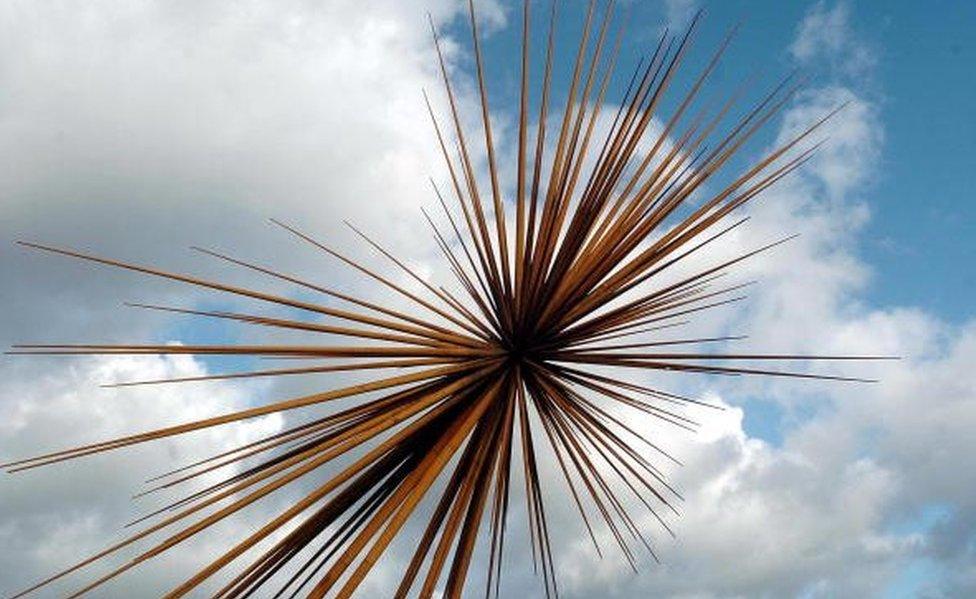
The B of the Bang was installed in 2005 three years after Manchester hosted the Commonwealth Games
B of the Bang was commissioned to mark Manchester's hosting of the 2002 Commonwealth Games.
It was unveiled three years late and only lasted until 2009 before being pulled down amid safety concerns after one of its large spikes fell to the ground.
In 2012 the statue's metal core was sold for scrap for £17,000, while the 180 spikes remain in storage.
Manchester City Council successfully sued designer Thomas Heatherwick, external and three sub-contractors for £1.7m.

King Kong, Birmingham
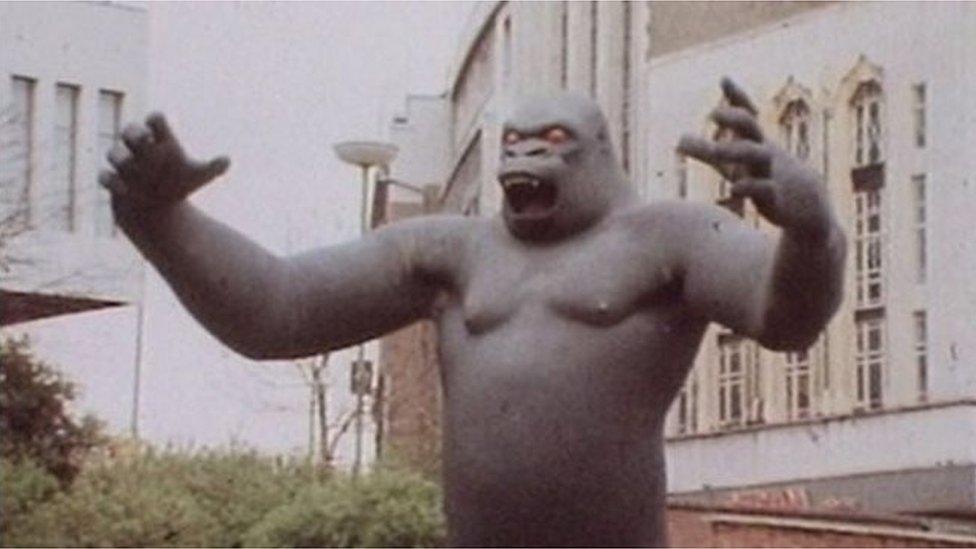
King Kong was installed in the centre of Birmingham in 1972, he now lives in a garden in Edinburgh
King Kong only spent six months in the centre of Birmingham's Bull Ring development but was so popular campaigners are still calling for his return more than 40 years after he was pulled down.
"Lots of people loved him, lots hated him but all who saw him remember him and the majority thought he was fabulous," said campaigner Andy Munro.
The 22ft fibre glass gorilla was one of 24 sculptures in eight cities commissioned in the 1970s as part of a project run by the Arts Council and a cigarette company.
"The Brummies are self-effacing people with a great sense of humour about themselves," said Mr Munro, who is hopeful that one day King Kong might be persuaded to leave his current home, a private garden in Edinburgh.
"King Kong epitomises our tongue-in-cheek attitude, but he's actually more important than just something to laugh at.
"He represents what public art as a whole should be about.
"It should be amusing and something people talk about, and that can certainly be said about King Kong."
- Published18 September 2012
